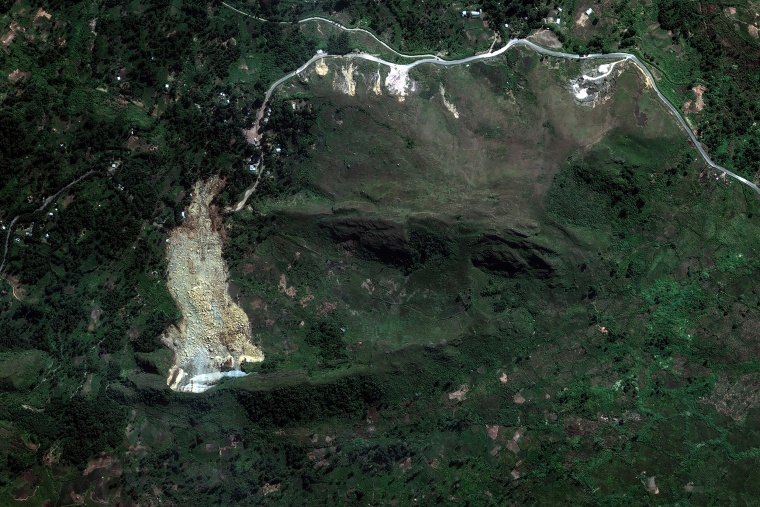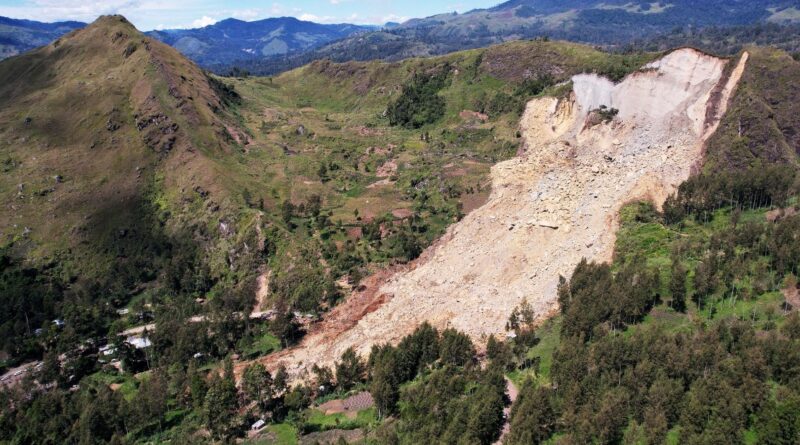Drone footage shows scale of destruction in Papua New Guinea landslide
A mass of boulders, earth and splintered trees can be seen in new drone footage released Tuesday of the devastation from a landslide that wiped out a village in a remote part of Papua New Guinea.
People can be seen pacing back and forth searching for their loved ones in the shadow of the limestone mountainside, part of which sheared away Friday, devastating the village of Yambali in the South Pacific nation’s remote highlands.
As they used shovels, sticks and their bare hands in the footage released by the United Nations Development Programme (UNDP), the hope of finding their loved ones alive in the tons of rubble becomes increasingly unlikely.
But moving heavy machinery into the area is proving difficult. Only one large digger has arrived in Yambali village because a collapsed bridge in the neighboring Western Highlands province has cut off the main highway, officials in the region said.
“The challenges we face in the aftermath of this tragedy are immense,” Serhan Aktoprak, chief of the International Organization for Migration’s mission in Papua New Guinea, said in a news release Tuesday.
“The area remains extremely dangerous due to ongoing land movement, and access is hindered by blocked roads, damaged infrastructure, and adverse weather conditions,” he said.
In a separate interview with The Associated Press, he said a “whole community that was situated at the foot of the mountain has been buried,” and hopes of saving them alive were “shrinking.”
“We are hearing suggestions that another landslide can happen and maybe 8,000 people need to be evacuated,” he added.
The Papua New Guinea government said Monday that more than 2,000 people were buried by the landslide, much higher than the United Nations’ figure, which estimated the death toll at 670.
It might never be possible to determine the exact number of dead because a 2022 voter roll did not include individuals under 18, who make up a large percentage of the population. The last government census was in 2000.
The landslide was “one of the most severe” in years in an area plagued by earthquakes and other weather related disasters, Nicholas Booth, Papua New Guinea’s resident representative for the UNDP, told NBC News on Monday.
“This is going to be slow and difficult work,” he added.
The landslide, which occurred in the middle of the night, buried a 650-foot stretch of Enga province’s main highway under debris 20 to 26 feet deep, creating a major obstacle to relief workers.

Only nine bodies have been recovered so far, according to the UNDP, which estimates that 150 structures have been buried.
Enga province has also been marred by tribal warfare creating another major hurdle for aid workers trying to remain in the area, forcing the military to escort convoys of relief teams.
Clean food and water, clothing, shelter items, kitchen utensils, medicine and hygiene kits and psychosocial support for survivors were required immediately, the UNDP said in a statement.
Itayi Viriri, regional spokesperson for the International Organization for Migration, told a news conference Tuesday that there were fears that bodies could contaminate the region’s water supply.
“Any sources of clean drinking water further down the mountain where the landslide occurred will be contaminated,” he said.
“This needs to be dealt with,” Viriri added.




